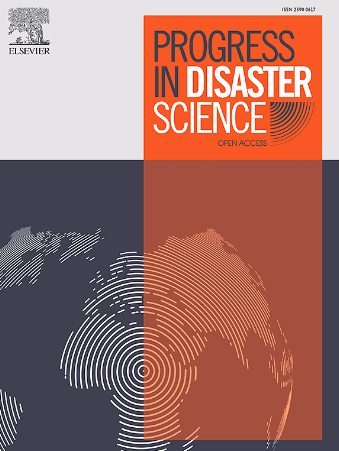Understanding the dynamics of evacuation delays: A study of the 2021 mount Semeru eruption through PLS-SEM analysis
IF 3.8
Q3 ENVIRONMENTAL SCIENCES
引用次数: 0
Abstract
This study explores the key factors contributing to evacuation delays during the 2021 eruption of Mount Semeru in Indonesia. Using Partial Least Squares Structural Equation Modelling (PLS-SEM), data were collected from 100 affected residents to examine behavioural responses and decision-making dynamics during the crisis. The analysis tested eight hypotheses and found that five were statistically significant, indicating that lack of information, emotional attachment to property, absence of evacuation plans, limited infrastructure, and family-related concerns were positively associated with delayed evacuation decisions. Notably, 71 % of respondents relied on neighbours as their primary information source, and 80 % reported experiencing panic during the evacuation process. These findings highlight critical gaps in community preparedness and emergency communication systems. The study concludes that strengthening early warning dissemination, enhancing infrastructure, conducting regular evacuation drills, and addressing socio-emotional factors are essential to improving evacuation effectiveness. This research contributes to a deeper understanding of evacuation behaviour during volcanic disasters and offers practical recommendations to enhance community resilience and emergency management practices.
了解疏散延迟的动力学:通过PLS-SEM分析对2021年塞梅鲁火山喷发的研究
本研究探讨了2021年印度尼西亚塞梅鲁火山喷发期间导致疏散延误的关键因素。利用偏最小二乘结构方程模型(PLS-SEM),收集了100名受影响居民的数据,以检查危机期间的行为反应和决策动态。该分析测试了8个假设,发现其中5个具有统计学意义,表明信息缺乏、对财产的情感依恋、缺乏疏散计划、基础设施有限以及家庭相关问题与延迟疏散决策呈正相关。值得注意的是,71%的受访者依赖邻居作为主要信息来源,80%的受访者报告在疏散过程中经历了恐慌。这些发现突出了社区准备和应急通信系统方面的重大差距。研究认为,加强预警传播、加强基础设施建设、定期进行疏散演练、处理社会情绪因素是提高疏散效果的关键。这项研究有助于更深入地了解火山灾害期间的疏散行为,并为加强社区复原力和应急管理实践提供实用建议。
本文章由计算机程序翻译,如有差异,请以英文原文为准。
求助全文
约1分钟内获得全文
求助全文
来源期刊

Progress in Disaster Science
Social Sciences-Safety Research
CiteScore
14.60
自引率
3.20%
发文量
51
审稿时长
12 weeks
期刊介绍:
Progress in Disaster Science is a Gold Open Access journal focusing on integrating research and policy in disaster research, and publishes original research papers and invited viewpoint articles on disaster risk reduction; response; emergency management and recovery.
A key part of the Journal's Publication output will see key experts invited to assess and comment on the current trends in disaster research, as well as highlight key papers.
 求助内容:
求助内容: 应助结果提醒方式:
应助结果提醒方式:


